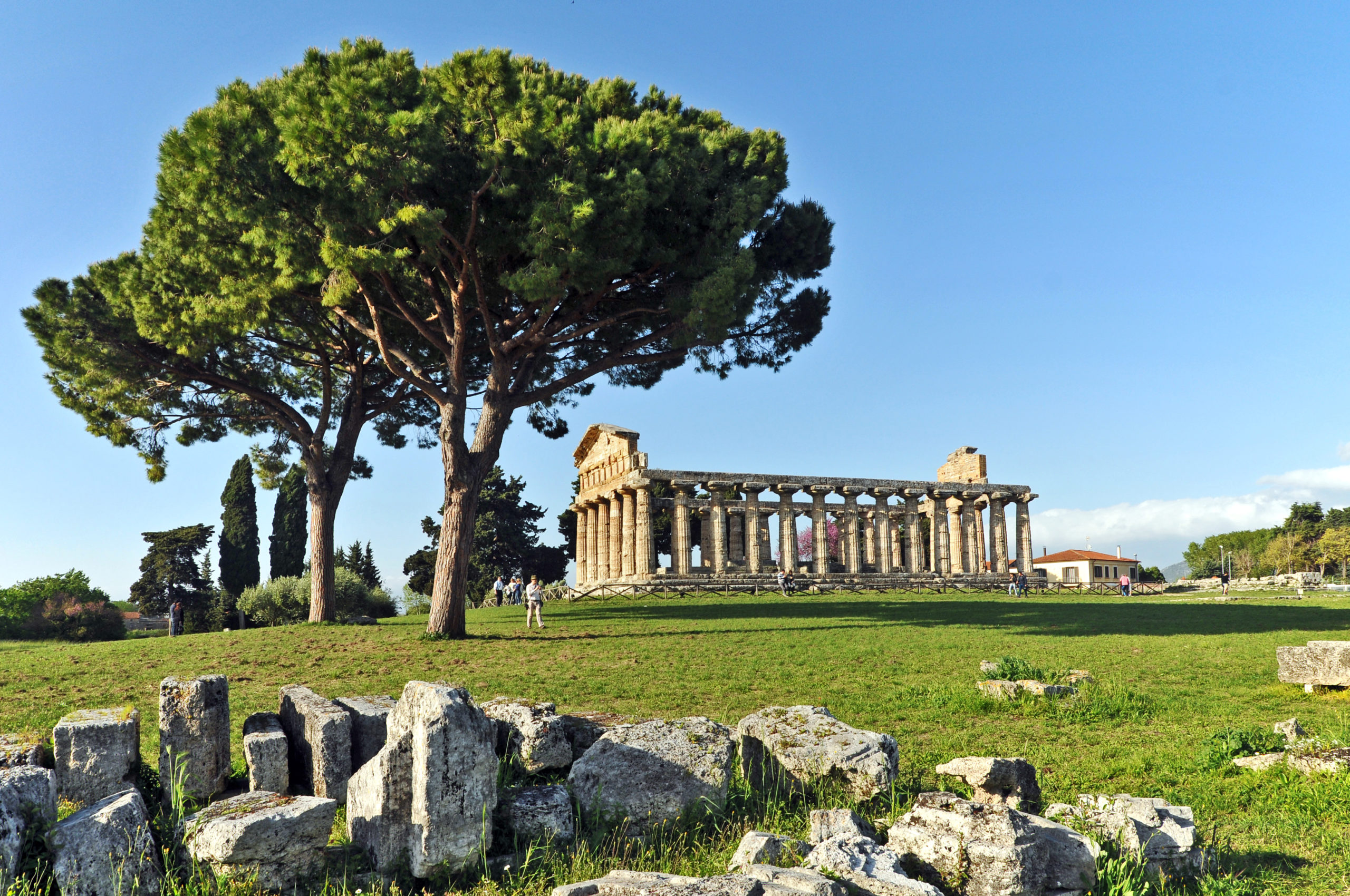THE RUINS OF VELIA
GRAND TOUR BLOG | 3 March 2020

THE RUINS OF VELIA

THE DOOR ROSA
The Rosa Velia Gate provides an interesting example of the use of the bow in Greek. Actually this is not a real gateway but a partition between the north area and the south of the city, a sort of fire barrier reef created to isolate the two areas of the city.
La Porta Rosa in itself is a wonderful monumental work of great archaeological interest but above all is the place where begins the adventure of Western metaphysics. Those who go to striving wholeheartedly after the Parmenides Elea (circa 515 AC) the founder of the Eleatic school and its Poem “On Nature”, also he speaks of the port here which can be endorsed and crossed. Walking the Via di Porta Rosa, we can visit the Baths Hadrianic (II sec. d.C.) where the various rooms are the visible calidarium and the hall of frigidarium, decorated by beautiful mosaic tiles in black and white that depict animals and sea monsters.
ACROPOLIS AND THE CASTLE
The headland was the first area settled by Greek colonists and it was found a wide road surrounded by homes, built with the typical technique of Focei, from the rocky spur that led to the beach. Around 480 – 460 a. C. It is an authentic bulwark to which was entrusted with the difficult task of defending the connecting waterways with the Tyrrhenian coast, and with the internal and mountainous areas of Cilento.
THE SACRED WELL AND SPAS
The artificial well built for religious reasons has a depth of 8 meters. In the well, the faithful threw their offerings to the gods many of which were found during excavations. As the sacred place is very close to the harbor it was assumed that it was used by sailors for ex-voto to return or with a view to starting to curry favor with the gods.
THE TERM
Essential the source Hyele from which has been realized l 'thermal plant of considerable merit with engineering by means of steam heating, a large rectangular tub for the warm bath and various small terracotta tubs for individuals. Following the work financed and now underway, the Velia archaeological site will open a new point that is a very strong and important symbol linked to the history and the birth of the city that was Parmenides.
THE HOUSE OF AFFRESCHI
The house known as the frescoes has a width 400 square meters and it has been brought to light only in small part. E’ It consists of 34 environments, organized around an atrium, bordered to the east by a Roman road paved with limestone blocks. The name of the complex is due to the discovery of a rich decorative repertoire due to the Third Pompeian style that characterizes some circles relative to the phase of the first imperial age.
ARCHAEOLOGICAL PATH
The archaeological itinerary starts from lower town, where most of the buildings date back to the Hellenistic and Roman. The driveway runs along the city walls, long 5 km, built in VI sec a.C. In front of the walls there is a necropolis dating back to I –II sec. d.C.The access to the excavations can also occur through Porta Marina South, protected by a quadrangular tower of two construction phases: the first dates back to V sec. a.C. and it is made with sandstone blocks of seats in the lower part, the second is to datable III sec. Via Porta Rosa he has the only example of greek arch of the fourth century, a true architectural heritage era. Crossing it can visit the Adriane Terme, of the II sec. d.C., where the various rooms are the visible calidarium he was born in frigidarium, decorated with a splendid mosaic that depicts animals and sea monsters. Continuing you will find a sanctuary of Asclepius, Medical divinity and in guaritrice.Passeggiare 'Agora Velia is an experience that offers unique emotions. Going up to the Acropolis, where there was an area sacred to Poseidon, There is a theater, built in Roman times on the remains of an ancient greek temple, where it is kept the Sanctuary of Zeus. There are also some buildings damaged in the Middle Ages, when a castle is built. Of this period are preserved the Angevin Tower e two churches: the Palatine chapel it is to Santa Maria Church.The decline of Velia came with the gradual silting up of ports, which caused the end of trade and economic wealth. With the advent of Christianity, the city became a bishopric until the final depletion as a result of the Saracen invasions. Thanks to its privileged location on a promontory, in Norman times it was built a tower to the sighting of the raiders from the sea. The ancient city has rediscovered a new life thanks to the excavations. initiated in 1921 They have brought to light the beautiful architecture making it completely rebuild the plant. The works have made Velia famous around the world as to be declared UNESCO World Heritage Site in 1996.



